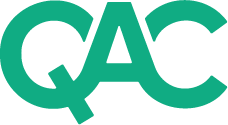This on campus AAT bookkeeping course provides the skills and knowledge needed for completing the manual bookkeeping tasks that underpin all accountancy and finance roles.
You will develop practical accountancy skills in double-entry bookkeeping and using associated documents and processes, whilst gaining an understanding of increasing digital automation.
You will also learn about transactions for accuracy, how to make entries in ledgers and calculate sales invoices and credit notes.
What’s included?
- Support from course tutor
- On-site exam or AAT approved centre
- Weekly on-campus class





